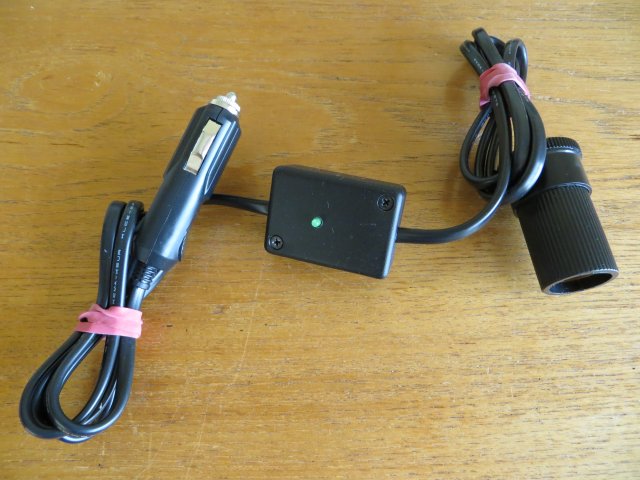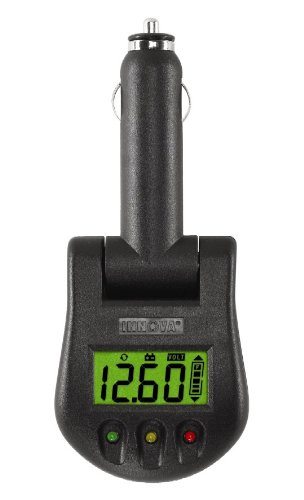
- #Plugin car battery monitor how to#
- #Plugin car battery monitor full#
- #Plugin car battery monitor registration#
–Vikram Sundaram is a product marketing engineer at Texas Instruments.Įlectric vehicles are going mainstream as battery and power management technologies mature and EV charging infrastructure expands.ĭemand is building, but battery EVs still require performance improvements and technology advances.

Improving voltage measurement accuracy in battery monitoring systems.Improving temperature measurement accuracy in battery monitoring systems.
#Plugin car battery monitor how to#
Next-generation battery monitors: how to improve battery safety while improving accuracy and extending runtime.

We may not need roads where we’re going, but we’ll certainly need safe batteries. Moreover, these advanced battery monitoring and battery management technologies alongside the optimization of battery production processes promises to further increase environmental benefits of adopting electric transportation. That’s why a solution that actively monitors cell temperature, voltages, and current is the ideal choice. Ultimately, the ability to accurately monitor cell currents and voltages in tandem with temperature proves to be a great tool to know your battery and vehicle are safe to operate.Ĭhoosing an e-bike battery monitoring solution that prioritizes the safety of its users and battery longevity should be standard in any design. From a preventative standpoint, the device can disable charging or discharging by controlling protection switch FETs using the integrated FET drivers. If we happen to detect that the open circuit voltage of a cell is higher than its rated charge voltage, the device will identify this as cell overvoltage (a phenomenon which expels the excess potential energy as heat) and disable further charging from occurring. This is where our current and voltage monitoring help us triage. Now that we’ve ensured our battery won’t burst into flames as a result of poor thermal management, we can start monitoring the parameters that can really help optimize battery efficiency and lifetime. E-bike powered by a lithium-based battery. The integrated thermal protection features can also disable charging and/or discharging automatically when temperature extremes are detected. This is where battery monitoring devices with thermal management capabilities come in handy.įor example, the temperature measurement capabilities featured in BQ76942 and BQ76952allow us to keep track of internal die temperature and external thermistor temperatures as well. There’s also the risk of thermal runaway which could result in swelling of the battery and potentially an explosion. At higher temperatures (greater than 45☌), the battery is not allowed to charge beyond a moderate temperature, and is prevented from discharging as the temperature rises higher. At lower temperatures (below 5☌), Li-based batteries do not work as well and are often prevented from operating or charging. To protect the battery and overall system – both of which are evaluated against various industry standards and regulations – the battery must be disabled whenever the cell temperature, the input voltage or the current are outside its specified range of the cell. Accuracy in measuring these parameters helps the monitor determine when to activate its protective capabilities, giving engineers more leeway and headroom in their designs, thereby allowing for larger battery capacity and extended range. You may ask, What kind of battery monitoring solution is able to give battery pack engineers peace of mind and keep urban explorers safe? That would be a solution that considers cell voltage, current and temperature. This is where an effective battery monitoring solution can help.
#Plugin car battery monitor full#
Notably, new e-bikes being registered for license plates must have a maximum speed of 25 km/h, lithium batteries and the ability to attach pedals.Īs we move toward a future full of flying cars and hover-boards, Li-based batteries mostly set the standard, which makes increasing their utility and ensuring they are safe an absolute must.
#Plugin car battery monitor registration#
Other countries like India are working on similar local standards to limit the registration of new e-bikes by size, speed and battery type. In China, this transition was made official in April 2019 with the GB 17761-2018 standard covering the complete bicycle safety (including electronics). But the search for a battery chemistry with less of an environmental impact and a lower weight – which translates into an e-bike that is safer to maneuver and stop – is most responsible for accelerating the drive toward the widespread use of lithium-based (Li-Ion or LiFePO4, for instance) battery technologies in Light EVs (LEVs).

Batteries, often based on lead acid (PbA chemistry) have been used for quite some time to power small e-vehicles and e-bikes for green, eco-friendly transportation.


 0 kommentar(er)
0 kommentar(er)
